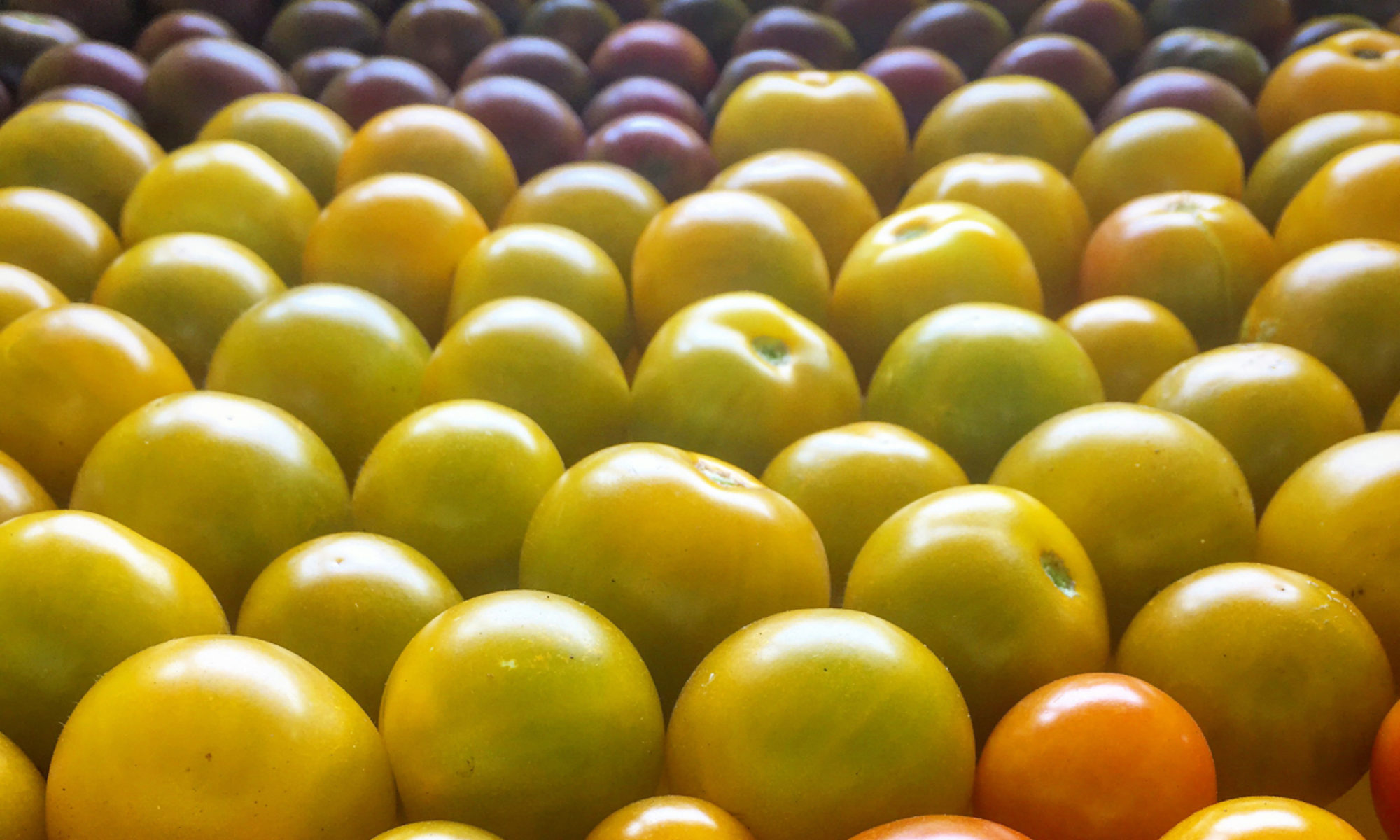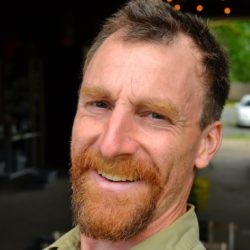
On the last day of this past October I had the good fortune to visit T&T Seeds in Chioggia, Italy. T&T is a commercial seed company specializing in radicchio, but also offering all sorts of chicories and a number of other vegetable seeds as well.
I’ve been growing radicchio on and off for at least 15 years now but I’ve always felt like I was stumbling around in the dark a bit. Visiting T&T, specialists in radicchio, definitely shed some light on the topic and gave me a peek at some of the possibilities and techniques. I’m going to attempt to translate my notes and memories (two months later) of what the folks at T&T passed onto me. Usually I write about my own production experience but I thought other folks might find this information, which I don’t find widely available in the US, useful in their own experimenting with cool season chicories.

Radicchio
Most of the information I got was from one of T&T’s breeders, Andrea, who fortunately spoke excellent english and was obviously very familiar with the regional production practices and especially with the varieties that T&T sells. We started by talking about early, or “precoce,” types (as opposed to late or “tardiva” varieties which are produced differently). The production practices he was showing us and was describing were on farms fields that were probably 15-30 acres of radicchio rotated with crops like wheat, corn, beans and maybe watermelons. This was conventional production and for wholesale markets, most of it for tight, full sized heads that would then be cut up for bagged salad mix.

For the Chioggia area both transplanting and direct seeding are used, but it sounded like transplanting might be slightly more typical, and certainly wasn’t uncommon. Plants were grown in plugs and planted out at three weeks. Direct seeded crops were seeded a few days later than the plug trays were seeded since there would be no transplant shock. Holding plants in plug trays longer than three weeks was not recommended as it causes problems with the roots which in turn causes uneven maturity. Spacing for plants, direct seeded or not, was about 12-14” in line and about 18” between rows. When plants were direct seeded they would be thinned in the field to make sure the spacing was even. On the farm we saw, the soil appeared to be clay loam. It sounded like irrigation is primarily with natural rainfall but sometimes by big gun. We did see drip lines at their research farm, which had sandy soil.

Timing for planting depends on the variety and the desired harvest date. The shorter maturing varieties are transplanted from the beginning of August to the middle of the month and were harvested from the end of September into November. Longer maturing varieties are planted from mid August to the beginning of September and are harvested from November possibly into February.

When I was thinking about how this compares to my experience here in the NW, I’m not as aware of the relative maturity type of the varieties that I’ve grown (something I’ll start paying more attention to), but it seems to me they probably plant a week or two later than I do and this is probably due to warmer nights and faster growth early on. The latitude is almost the same so it’s not about day length (although we might not get as much sun later in the season due to clouds).
Harvest timing is based on the head maturity. Heads are typically harvested when they are full and solid. If they are over mature they have a tendency to rot a bit at the leaf edges, requiring more cleaning and loss of weight. If there’s a threat of hard frost they might harvest slightly immature with a bit of green still in the wrapper leaves and leaving an inch or so of root attached. They are then stored for a few days to a week and the heads finish maturing in storage (I’m not sure if this is at a slightly higher temperature than typical storage or not but I would assume so).
Tardiva varieties are grown very similarly to precoce but they are harvested differently. They are dug with the root and then forced in flowing water (or water that is regularly changed). There is a great video on this process here. I’ve heard rumor of folks over here doing this successfully in buckets on a very small scale, changing the water every few days instead of using flowing water.

There are three basic shapes for the precoce radicchio: Chioggia, Treviso, and Verona. The Chioggia shape is completely round, Treviso is long and upright, and the Verona type is half way between with a round bottom, but a slightly pointed tip.
The typical radicchios are red and T&T has a particular deep color red that they select for. They also sell Castlefranco, and Lusia which are red flecked green varieties, as well as a completely green variety. According to Andrea, older varieties of Castlefranco were typically harvested and then blanched in cow barns on straw for a few days to a week. They were then watered which opened the head into a rosette. Modern varieties are tight which makes them self blanching in the field, but not open at harvest so they are typically peeled back slightly at harvest to display the same rosette as the old varieties. Sometimes Lusia or the green varieties are harvested in the same way and passed off as Castlefranco.

Here in the U.S. we typically have one or two varieties available from a seed company in a particular form. T&T has three Sugarloaf radicchio varieties available (one of my favorites), a 75 day, a 90 day and a 120 day. If you want a standard red Chioggia type, they have 10 available ranging from 55 to 160 days. It’s easier to think about extending harvest with that range available. This year I’m trailing seeds from T&T but I also looked around and found varieties I wanted to try from Wild Garden Seeds, Adaptive Seeds, Uprising Seeds, Seeds from Italy, High Mowing Seeds and Johnny’s Selected Seeds. Osborne Seeds is the main importer of T&T seeds here in the Northwest. I’ve heard from them, and from other growers of T&T varieties that they are exceptionally uniform for radicchio so I’m curious to trial them against other companies.
In Italy, when fields are harvested they are gone through once, or maybe twice, and the typical yield is 80 heads out of 100 heads planted. In poor conditions it can take 4-5 harvests to get that yield. The heads of Chioggia we were seeing there were about 1lb each, beautiful and tight. My yields have been significantly lower than that here in Oregon, although I also have very heavy vole pressure and have found that voles prefer radicchio over most other winter crops.

Spring Production
I wasn’t very interested in spring production so I didn’t ask much but Andrea did mention it a few times. Apparently they use the shortest day varieties to produce heads in late spring before temperatures get too hot.
It does seem that radicchio is produced in many areas now, and by moving north and south the harvests can be extended. A helpful chart in their catalog shows planting and harvest periods by variety for four different regions of Italy with seeding dates ranging from mid May to late July in the most Northern mountain regions, and mid July through mid August in the South.
Other Chicories
We talked less about other types of chicories but we did see escarole, endive, catalogna, puntarelle and a few other specialty types of radicchio including a beautiful light rose colored one. According to Andrea they do have different day length varieties of the escarole and endive, but they are planted more like lettuce, with successions to spread out the harvest. The endive is banded 3-5 days before harvest to blanch, although some of the varieties are partially self blanching. They are selecting a puntarelle for more northern production but most production is currently done farther south, near Rome, and the timing is very specific, by variety, to get fat stalks.

Thank Yous
A big thank you to Jason Salvo @jasonsalvo for the initial contact information for T&T. During our visit @culinarybreedingnetwork and I were posting photos to instagram and there was some great conversations on production here in the US in the comments. I also want to thank Chris Fields @camporossofarm and Alex Wenger @thefieldsedge. Apparently there are some folks here in the US who are growing really beautiful stuff, maybe even surpassing what’s happening in Italy in some cases, but certainly without the same demand or big production.



















